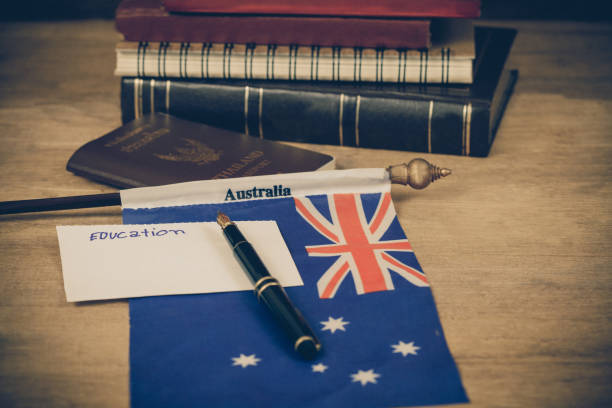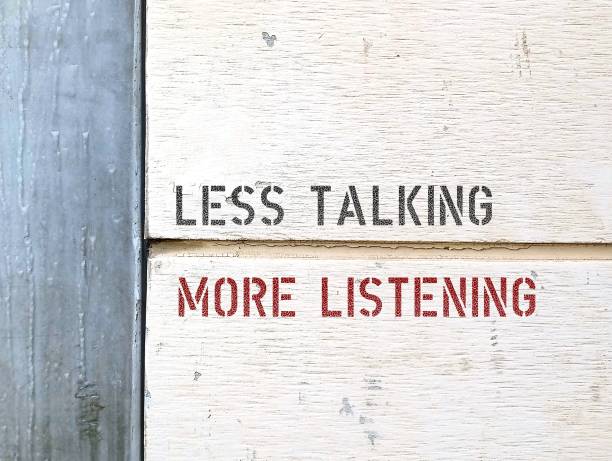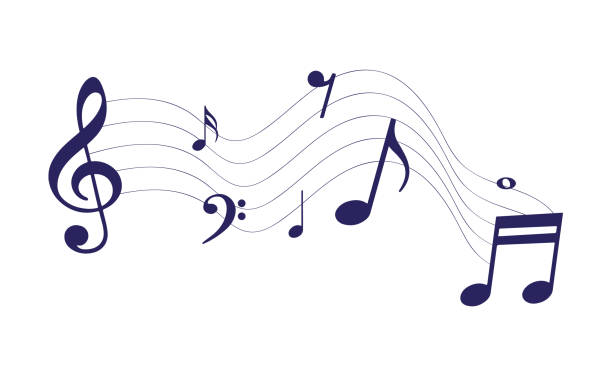How To Write An Australian Accent (10 Best Ways You Need To Know)
Mastering the art of writing in an Australian accent is a linguistic adventure akin to navigating the vast and diverse landscapes of the continent itself.
Beyond pen and paper, it involves capturing the rhythmic cadence, colloquial vibrancy, and unique linguistic nuances that define the Aussie vernacular.
Crafting an Australian accent in writing is more than just stringing words together; it’s about imbuing your sentences with the unmistakable flavor of Down Under, where phrases sway like gumtrees in the breeze and idioms resonate with the spirit of the Southern Cross.
In this exploration, we delve into the intricacies of written expression, uncovering the tips and techniques that transform mere text into an immersive journey through the diverse linguistic terrain of Australian English.
So, tighten your linguistic seatbelt and prepare to embark on a writing odyssey where every sentence echoes with the distinctive resonance of the Australian accent.
How To Write An Australian Accent
Writing an Australian accent in text involves capturing the unique phonetic characteristics and expressions commonly associated with Australian English.
Familiarize Yourself with Australian English
Listen to native speakers
Watch Australian movies, TV shows, or listen to podcasts featuring Australian speakers. Pay attention to the rhythm, intonation, and pronunciation.
Master the Vowel Sounds
Australian English has distinct vowel sounds. For instance, the “i” in words like “kit” is often pronounced closer to “ee.” Explore the differences in vowel pronunciation, such as the flattened “a” sound in words like “dance” or “chance.”
Embrace Consonant Pronunciations
Australians may drop certain consonants, especially at the end of words. For example, “g” in words like “going” might be softened or omitted. Familiarize yourself with these tendencies.
Understand Intonation and Pitch
Australians often have a rising intonation at the end of sentences, even in declarative statements. Practice using this upward pitch in your written dialogue.
Incorporate Australian Slang and Expressions
Australians have a unique set of slang words and expressions. Integrate these into your writing to add authenticity. For example, “G’day” for hello, “mate” for friend, or “arvo” for afternoon.
Use Idiomatic Expressions
Australians have their own idioms and expressions. Incorporate phrases like “No worries,” “Fair dinkum,” or “She’ll be right” to capture the colloquial tone.
Consider Regional Differences
Keep in mind that accents can vary across different regions of Australia. If your characters are from a specific area, try to capture the nuances of that regional accent.
Read Australian Literature
Reading works by Australian authors can help you understand the language nuances and writing style. It provides insight into how native writers capture the Australian voice.
Practice Writing Dialogue
Experiment with writing dialogue in an Australian accent. Use the phonetic differences you’ve observed to convey the unique sound in your characters’ speech.
Seek Feedback from Australians
If possible, share your writing with native Australians and seek feedback. They can provide valuable insights into the authenticity of the accent and help you refine your approach.
Remember that writing an accent is a delicate balance. You want to convey the essence of the accent without making the text difficult for readers to understand. Use these steps as a guide to infuse your writing with an Australian flavor.

Understanding the Australian Accent
Unlocking the enigmatic symphony of the Australian accent is akin to embarking on a linguistic odyssey through the sunburnt landscapes of phonetic diversity.
From the rhythmic dance of vowels that mimic the undulating waves of the Pacific to the tantalizing twang of consonants reminiscent of eucalyptus-laden breezes, the Australian accent is a linguist’s treasure trove waiting to be discovered.
It’s not merely a mode of speech; it’s a vibrant tapestry woven with the threads of history, colonization, and cultural evolution.
To comprehend the nuances of the Australian accent is to venture beyond pronunciation, diving headfirst into the very heartbeat of a nation whose linguistic cadence is as diverse as its mesmerizing landscapes.
So, tighten your vocal cords and prepare to decipher the antipodean sonnet, where each syllable whispers tales of the Southern Cross and the vastness of the Great Barrier Reef.
Historical background of the Australian accent
The historical roots of the Australian accent delve deep into the annals of colonization and the multifaceted tapestry of immigration that has shaped the nation’s linguistic identity.
With the arrival of British settlers in the late 18th century, the foundation for the Australian accent was laid. Initially tethered closely to the accents of the motherland, a unique transformation unfolded over time.
The isolated and harsh conditions of the Australian continent fostered linguistic adaptation and divergence. The blending of various English dialects with indigenous languages, coupled with the influx of diverse immigrant communities, infused the accent with a distinct character.
From the colonial echoes of the First Fleet to the colloquial resilience of the Aussie spirit, the historical evolution of the Australian accent is a captivating narrative, illustrating how language evolves in harmony with the ever-changing currents of culture and identity.
Listening and Mimicking
Embarking on the journey to master the Australian accent is like tuning your ears to a symphony of linguistic artistry.
Listening becomes a passport to a land where vowels sway like eucalyptus leaves in the breeze, and consonants resonate with the rhythm of the didgeridoo.
It’s a dance of linguistic finesse that requires not just hearing but actively listening — immersing yourself in the rich cadence of Aussie speech.
Yet, the real magic lies in the art of mimicry. It’s not just about repeating words; it’s about orchestrating your vocal chords to harmonize with the distinctive melody of the Australian vernacular.
It’s a linguistic tango, a delightful mimicry ballet where every inflection is a step toward mastering the accent. So, embrace the role of an accent alchemist, let your ears be the guide, and dance the linguistic waltz towards mastering the Aussie intonation.
Importance of active listening
Active listening is the beating heart of mastering any accent, and the Australian lilt is no exception. Beyond a mere auditory exercise, it is a dynamic engagement with the nuanced symphony of intonations, rhythms, and peculiarities that define the Australian accent.
Through active listening, learners not only expose themselves to the diverse linguistic landscape but also cultivate an acute sensitivity to the subtleties that distinguish this captivating speech pattern.
It is the gateway to understanding the tonal contour of words, the cadence of phrases, and the unique phonetic signatures that make the Australian accent an intricate masterpiece.
Much like an artist studying the strokes of a painting, active listening allows learners to dissect the auditory canvas, enabling them to paint their own linguistic masterpiece with authenticity and precision. It’s the key to unlocking not just the sounds but the soul of the Australian accent.

Pronunciation Exercises
Embarking on the odyssey of perfecting the Australian accent is like entering a linguistic gymnasium where pronunciation exercises are the weights that sculpt your vocal prowess.
Vowels become acrobats, somersaulting through the syllabic circus, while consonants engage in a rhythmic ballet, each step a move towards phonetic perfection.
Picture yourself as a linguistic maestro, orchestrating the intricate dance of sounds with finesse. These exercises are not mere vocal calisthenics; they’re a symphony of phonetic acrobatics that elevate your speech to a crescendo of Aussie authenticity.
So, grab your linguistic dumbbells and embark on the exhilarating journey of pronunciation refinement – where each articulation is a brushstroke, painting the canvas of your speech with the vibrant hues of the Australian accent.
Vowel pronunciation drills
Diving into the labyrinth of Australian vowel pronunciation is akin to navigating the diverse landscapes of the continent itself.
Vowel pronunciation drills are the compass guiding language learners through the undulating terrains of linguistic nuances.
From mastering the subtle dance between long and short vowels to conquering the art of diphthongs, these drills are the linguistic sculptor’s chisel, shaping each vowel sound with precision.
Imagine it as a vocal safari, exploring the vast outback of sounds where every vowel is a unique creature waiting to be tamed.
Through targeted drills, learners not only refine their articulation but also unlock the door to the melodic richness that defines the Australian accent.
So, embark on these vowel pronunciation escapades, let each drill be a linguistic expedition, and soon you’ll find yourself navigating the vowel soundscape with the finesse of a seasoned linguist.
Intonation and Rhythm
In the melodic tapestry of the Australian accent, intonation and rhythm are the choreographers, orchestrating a linguistic ballet that dances to the rhythm of the Southern Cross.
Imagine your speech as a didgeridoo, each syllable a resonant note in the symphony of communication. Intonation becomes the secret sauce, infusing your words with the distinctive rise and fall that mirrors the undulating landscapes Down Under.
Rhythm, on the other hand, is the heartbeat of your linguistic journey, dictating the cadence and pace of your spoken expression.
It’s not just about saying the words; it’s about embodying the pulsating soul of the Australian vernacular. So, let your speech become a rhythmic poem, a linguistic dance that echoes the vibrant spirit of the land where kangaroos roam and accents sway like wattle in the breeze.
Mastering the Australian accent isn’t just about words; it’s about tuning into the poetic heartbeat of a nation.
Understanding Australian intonation patterns
Understanding Australian intonation patterns is like deciphering the lyrical contours of a cultural symphony. It’s more than just the rise and fall of pitch; it’s a nuanced dance that paints meaning onto words.
Imagine your sentences as musical notes, each rising and falling to create a distinctive melody. Australian intonation is like a linguistic rollercoaster, where questions might soar at the end like a kangaroo leaping across the outback, and statements might descend like a sunset over the Coral Sea.
The beauty lies not just in the patterns but in the subtle cues that convey attitude, emphasis, and emotion. It’s the secret sauce that turns mere words into a conversation, each rise and fall shaping the conversation like the winds shaping the rugged Australian terrain.
So, tune in to the musicality of Australian intonation, and soon you’ll find yourself speaking a language that goes beyond words – it becomes a harmonious dialogue with the spirit of the land Down Under.
Common Pitfalls and Misconceptions
Navigating the landscape of the Australian accent is an exhilarating linguistic safari, but beware the treacherous pitfalls and misconceptions that lurk like linguistic crocodiles in the billabong.
One common mistake is falling prey to the allure of stereotypes, where the accent is reduced to a caricature of ‘G’days’ and ‘mate.’ The real magic lies in embracing the kaleidoscopic diversity of the accent, transcending clichés to capture the authentic cadence of everyday speech.
Another pitfall is neglecting regional variations, treating the accent as a monolithic entity when, in fact, it morphs and shapeshifts across the vast expanse of the continent.
Like a linguistic bush tucker trial, avoiding these pitfalls requires more than just survival instincts – it demands a keen ear and a discerning palate for the rich tapestry of sounds that define the Australian vernacular.
So, toss aside the misconceptions, don your linguistic safari hat, and embark on an accent adventure that transcends the outback stereotypes.
Addressing common mistakes made by learners
In the intricate dance of mastering the Australian accent, learners often find themselves tripping over common pitfalls like a kangaroo navigating unfamiliar terrain.
One prevalent misstep is fixating on caricatures and falling into the trap of overemphasizing stereotypes, reducing the accent to a simplified caricature of ‘G’days’ and ‘mate.’
The true essence of the Australian accent lies in its diverse and nuanced expressions that go beyond clichés. Additionally, learners often neglect the importance of regional variations, treating the accent as a homogeneous entity.
Addressing these mistakes requires a conscious effort to delve into the rich spectrum of Australian speech, recognizing its multifaceted nature and embracing the authentic, everyday cadence.
It’s a journey of refining not just pronunciation but also understanding the cultural context that shapes the nuances of this captivating accent.
So, lace up your linguistic boots, sidestep the common pitfalls, and venture forth into the nuanced realm of Australian expression.

Immersive Learning Techniques
Immersive learning techniques for mastering the Australian accent are like linguistic passport stamps, each experience an entry into the kaleidoscopic world of Aussie expression.
Engaging with native speakers becomes a cultural tête-à-tête, a linguistic dance where every conversation is a step closer to acing the accent.
Imagine language exchange programs as portals to the heart of Australian vernacular, where colloquialisms are the secret handshake into the rhythm of daily speech.
Online communities and forums become virtual watering holes, where words flow like the Murray River, and cultural insights are exchanged like trading stories around a campfire.
For the intrepid learner, traveling to Australia is the grand pilgrimage, where language schools and cultural immersion become the proverbial treasure troves.
It’s not just about learning a dialect; it’s about breathing the same linguistic air as the locals. So, don your metaphorical explorer hat, embark on these immersive techniques, and let the Australian accent become not just a skill but a living, breathing part of your linguistic repertoire.
Engaging with native speakers
Engaging with native speakers is the golden key to unlocking the nuanced secrets of the Australian accent. It’s not merely a conversation; it’s a direct portal into the heartbeat of authentic expression.
Interacting with Australians provides an immersive experience where words aren’t just spoken but lived, each sentence a brushstroke painting the vibrant canvas of the language.
The cadence of their speech, the colloquialisms they effortlessly sprinkle into dialogue, and the rhythm of their stories become invaluable lessons.
Native speakers are the living textbooks, offering insights into the subtle variations that make the accent a dynamic tapestry.
It’s not just about learning the words; it’s about absorbing the cultural context, where language intertwines with the spirit of the people.
So, dive into the conversation, let the Aussie lingo wash over you like a wave, and watch as the Australian accent becomes more than a skill – it becomes a part of your linguistic identity.
Technology and Language Learning Apps
In the digital realm where language mastery meets cutting-edge innovation, technology and language learning apps are the unsung heroes of the Australian accent conquest.
Picture them as your linguistic sidekick, a virtual Crocodile Dundee guiding you through the wilds of vowel variations and consonant adventures.
Speech recognition software becomes the discerning mentor, offering real-time feedback on your pronunciation, ensuring every ‘G’day’ and ‘Crikey’ hits the right note.
Mobile apps and online platforms transform the learning journey into a gamified escapade, turning each lesson into a linguistic quest where conquering vowels feels like unlocking a hidden achievement.
It’s not just about pixels and code; it’s about transforming your smartphone into a portable accent maestro, a pocket-sized coach that turns every commute into an Aussie immersion experience.
So, strap on your digital kangaroo pouch, dive into the world of technology-driven language learning, and let the Australian accent be your next conquest in the vast landscape of digital language exploration.
Utilizing speech recognition software
Enter the realm of accent refinement with the wizardry of speech recognition software—a virtual maestro in the symphony of linguistic perfection.
It’s not just a tool; it’s your personal accent coach, scrutinizing each syllable with the precision of a linguistic virtuoso. Picture it as a vocal mirror, reflecting the nuances of your pronunciation in real-time.
Whether you’re fine-tuning the drawl in ‘mate’ or perfecting the dance of diphthongs, speech recognition software becomes the discerning critic, providing invaluable feedback on the cadence and rhythm of your spoken words.
It’s not merely about mimicking sounds; it’s about sculpting your speech until it seamlessly harmonizes with the distinctive notes of the Australian accent.
So, unleash the power of technology, let your voice be the instrument, and watch as speech recognition software transforms your linguistic endeavor into a captivating performance worthy of the antipodean stage.
Personalized Coaching and Feedback
In the pursuit of Australian accent excellence, personalized coaching and feedback are the bespoke tailors of linguistic refinement.
Imagine it as a one-on-one masterclass where your accent aspirations become the star of the show. Personalized coaching is not just about fixing sounds; it’s a collaborative journey, a duet between learner and coach, tuning every vowel and consonant until they hum in perfect antipodean harmony.
Feedback becomes the mirror reflecting your linguistic evolution, offering insights as precise as a compass needle pointing towards phonetic precision.
It’s the attentive guide in the Australian outback of accent mastery, steering you away from linguistic quicksand and toward the lush oasis of authentic expression.
So, embrace the tailored expertise, let personalized coaching be your linguistic couturier, and watch as your accent metamorphoses into a bespoke masterpiece tailored to the cadence of the Southern Cross.
Importance of feedback from native speakers or language coaches
The significance of feedback from native speakers or language coaches in mastering the Australian accent cannot be overstated; it is the compass guiding learners through the intricate maze of phonetic subtleties.
Native speakers and coaches act as linguistic custodians, offering insights that transcend the boundaries of textbooks and recordings.
Their nuanced feedback becomes a roadmap, pointing out the scenic routes and potential detours in the vast landscape of accent acquisition.
It’s not merely about correcting sounds; it’s a cultural exchange, a dialogue that unveils the layers of authenticity embedded in the accent.
Feedback from those intimately acquainted with the ebb and flow of Australian speech is akin to having a personal guide through the linguistic terrain, ensuring that every syllable aligns with the rhythm of the continent.
So, heed the wisdom of native speakers and coaches, let their feedback be your North Star, and embark on a linguistic journey where every correction is a step closer to mastering the rich cadence of the Australian accent.
Frequently Asked Questions about How To Write An Australian Accent
How can I capture the essence of an Australian accent in my writing?
Start by immersing yourself in Australian media to understand the distinct phonetic features. Master vowel sounds, embrace unique pronunciations of consonants, and pay attention to intonation and pitch.
Are there specific vowel sounds I should focus on when writing an Australian accent?
Yes, Australian English has distinct vowel sounds. Pay attention to differences like the “i” sound in words such as “kit” being closer to “ee,” and the flattened “a” sound in words like “dance” or “chance.”
Should I incorporate Australian slang into my writing to enhance the accent?
Absolutely! Using Australian slang and expressions, such as “G’day,” “mate,” or “arvo,” adds authenticity to your writing. Don’t forget to sprinkle in idiomatic expressions for a true Aussie flavor.
How important is it to consider regional differences in the Australian accent?
Regional accents vary across Australia, so it’s crucial to consider the specific region your characters are from. Tailor the nuances of the accent to reflect the geographical authenticity of your characters.
What role does intonation play in writing an Australian accent?
Intonation is key to capturing the Australian sound. Australians often have a rising intonation at the end of sentences, even in declarative statements. Practice incorporating this upward pitch into your written dialogue.
Are there any common mistakes to avoid when attempting to write an Australian accent?
Be cautious not to overdo it. While incorporating accent features is important, readability is paramount. Strike a balance between authenticity and clarity to ensure your readers can engage with the text comfortably.
Can reading Australian literature help me improve my ability to write an Australian accent?
Absolutely. Reading works by Australian authors provides valuable insights into language nuances and writing style. It helps you understand how native writers naturally capture the Australian voice.
How can I receive feedback on the authenticity of my Australian accent writing?
Share your work with native Australians and seek their feedback. Their insights will help you refine your writing and ensure the authenticity of the accent you’re trying to portray.
Is it necessary to drop certain consonants when writing an Australian accent?
Australians may drop certain consonants, especially at the end of words. While it’s not necessary to do this in every instance, incorporating this feature selectively can enhance the authenticity of your characters’ speech.
Can I use Australian movies and TV shows as a primary source for learning to write the accent?
Yes, Australian movies and TV shows are excellent sources for learning the accent. They provide real-life examples of pronunciation, intonation, and colloquial expressions that can enrich your understanding of the Australian voice.
Conclusion
In conclusion, mastering the art of writing an Australian accent involves a thoughtful and immersive approach. By delving into the phonetic intricacies, embracing distinct vowel and consonant sounds, and carefully considering intonation and pitch, writers can breathe life into their characters with an authentic Australian voice.
The incorporation of slang, idiomatic expressions, and an awareness of regional differences adds layers of richness to the narrative.
Balancing these elements is crucial; while authenticity is key, maintaining readability ensures that the written accent enhances, rather than detracts from, the overall storytelling experience.
Drawing inspiration from Australian literature and seeking feedback from native speakers further refines this linguistic artistry.
Ultimately, the journey to write an Australian accent is a dynamic exploration that invites writers to capture not just the sounds, but the spirit of the diverse and vibrant linguistic landscape Down Under.






